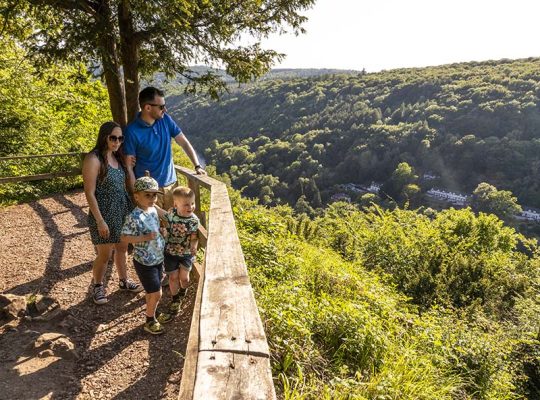
Dr Katy Reed
Entomologist
It’s a really supportive environment, and because we help one another, we also learn new skills along the way.
Katy joined Forest Research after majoring in Fine Art at Yale University in Connecticut, USA, and then completing an MSc in Conservation and Forest Protection at Imperial College London followed by completing her PhD at Harper Adams University, while based at Alice Holt Research Station.
Before you got into this field, what was your background?
Before I joined Forest Research, I actually studied Fine Art at university. I even worked in a contemporary art gallery for a while. It was definitely interesting, but I quickly realised it wasn’t what I truly wanted to do.
That experience made me really reflect on what I cared about and what I was passionate about. For me, the big concerns were climate change, biodiversity loss, and the threats to trees and forests.
How did you make that transition from art to entomology?
Once I realised where my true interests lay, I started looking for opportunities that aligned with that.
I found an MSc course at Imperial College London called ‘Conservation and Forest Protection,’ which seemed like the perfect fit. The person running the course was keen on having people from different backgrounds, so it felt like a natural way to switch careers.
I completed my MSc project at Forest Research, and then I stayed on to do a PhD.
What did you focus on during your PhD?
My PhD was centred around Agrilus biguttatus, a beautiful jewel beetle with blue colouring and white spots.
The project looked at the role this beetle plays in acute oak decline, which is a syndrome affecting many oak trees in the UK and Europe. Specifically, I focused on how temperature affects the beetle’s development so we could predict which parts of England would be suitable habitats for it.
I’ve been with Forest Research ever since.

Could you tell us what a typical day looks like for you?
One of the great things about my job is that no two days are the same.
One day, I might be in the lab conducting experiments, and the next I could be analysing data, visualising it, and looking for patterns. Then there are days when I’m writing up that data. We also have international collaborations with teams in Belgium and Denmark, and talking with them brings new insights into our shared research on tree pests.
It’s always varied, which keeps it interesting.
What part of your job do you enjoy the most?
I’d have to say that my favourite part is experimental design.
I love figuring out how to set up an experiment in a way that truly answers the scientific question we’re investigating. Then there’s the moment when you finally visualise the data you’ve worked so hard to collect, that’s always exciting.
Seeing those patterns emerge in R is incredibly rewarding. You really hope to find something meaningful!
How does collaboration play into your role?
We’re a small team, which means we all chip in on each other’s projects.
It’s a really supportive environment, and because we help one another we also learn new skills along the way. It makes things even more interesting because we’re not limited to working on just one pest or tree species.
Every day is different, and we gain experience across a range of projects.

What’s been something you’ve been proud of while working here?
Something I’ve been proud of is developing methods to work with Agrilus in the lab.
I first worked with Agrilus biguttatus during my PhD, a beetle that’s larvae develop underneath the bark of oak trees. Nobody had ever worked with it before in the lab, I had to develop all the methods from scratch.
The acute oak decline group now use some of the methods I developed to be able to answer some of the questions about what that beetle is doing.
Through talking to people in the USA and Canada, we then found that the techniques I had developed also worked well on a beetle they had been working on too, Agrilus planipennis. At Alice Holt we’re now able to apply those techniques to the work we’re doing on emerald ash borer.
What is the best thing about working here?
I wanted the things that I was doing in my career to be helpful for the future. Everyone at Forest Research feels that way and hopes that what we’re doing contributes in whatever way to making the world less of a scary place in the future.
We also have an amazing arboretum surrounding Alice Holt Research Station. If you need to go and look at a certain type tree, there is one 30 seconds away.
Why should someone consider a career at Forest Research?
If you’re worried about the environment, climate change and biodiversity loss, all those different areas are covered by the research groups here.
Trees are so important, from carbon sequestration to biodiversity. At Forest Research there are groups looking at all aspects of the important roles that trees play and trying to address the threats to them. If you’re a person who is interested in trees and forests, Forest Research is a great place to be.
I love what I do here because I can choose to work on questions and projects that I think are interesting and important. I can also work with great people.






